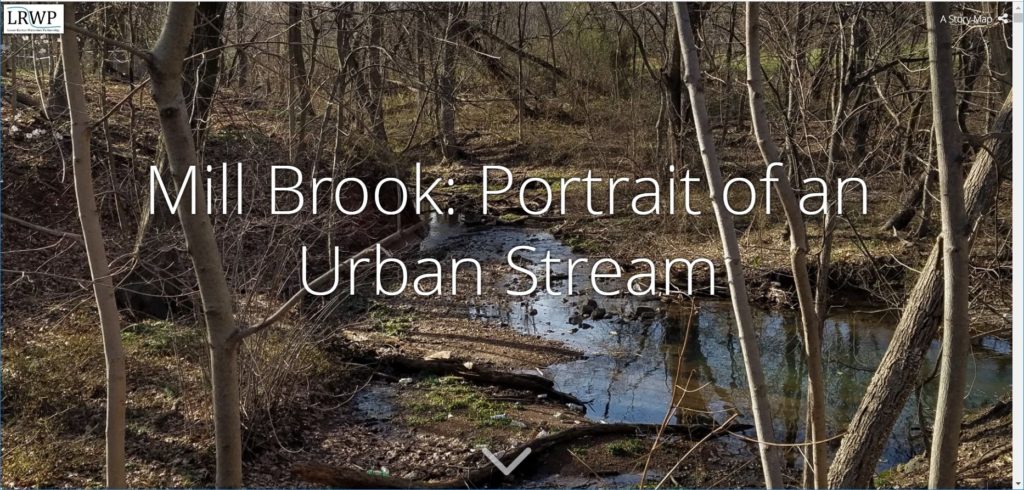Mill Brook: Portrait of An Urban Stream
by LRWP Streamkeeper Susan Edmunds
Thirty years ago, my husband and I moved into a house down at the end of a quiet street in Highland Park. Beside the house, in a low area, ran a little stream, nameless as far as I knew. I imagined making a garden beside it until I saw the muddy water that rushed through after heavy rains, rooting out vegetation, clawing away at the stream banks, and depositing all manner of storm debris. I came to think of the stream as nothing but a source of problems. Years went by. I sought advice from various experts and made some progress in resolving some problems, though others remained.
Eventually, in the Rutgers Environmental Stewardship program, I learned that the problems of urban streams are predictable and can, at least in theory, be mitigated. I learned that, with active community involvement, even large rivers have been significantly restored. The RES program led me to the Lower Raritan Watershed Partnership and a plan to document the stream that I now knew was called Mill Brook.
I took pictures and made lists of storm sewer outfalls, eroded portions of stream banks, retaining walls in various states of disrepair, and multiple types of litter, wondering how this information about predictable problems might be useful. Increasingly, my attention was caught by the magnificently tall trees in the Mill Brook stream corridor, the bird song high above me, the calming gurgle of the water at my feet, and the sense of being far away while actually only a few yards from the hubbub of one of the most densely populated regions in the United States. I have learned that Mill Brook has been a source of much happiness for others, too, over the years.
I composed this Story Map Mill Brook: Portrait of an Urban Stream to invite you, the reader, to experience for yourself this valuable natural resource that runs like a ribbon through our community. I hope that a virtuous circle may arise in which the value of Mill Brook is acknowledged in our communities so that we willingly do what it takes to resolve problems created by developments that include our own homes. In return, Mill Brook will increase in value to us because it is a healthier natural resource and because we will have the satisfaction of caring for it.

